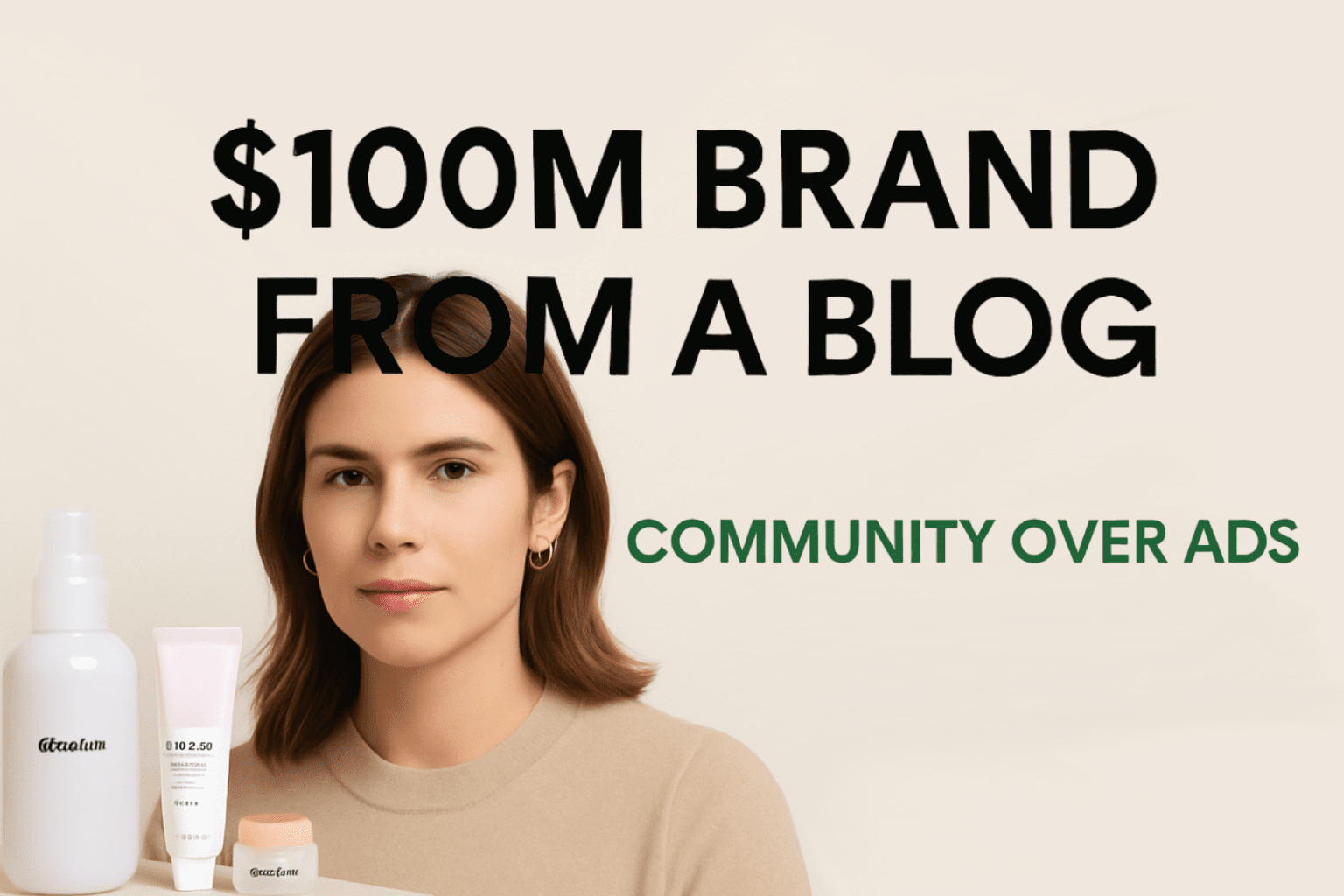The Origin: How a Beauty Blog Became a Brand Blueprint
Table of Contents
In 2010, Emily Weiss, a fashion assistant at Vogue, launched “Into The Gloss.” It wasn’t meant to be a brand. It was a side project. A blog. A safe space where real women could share what beauty meant to them — not the polished version sold in ads, but the raw, real, everyday experiences in front of bathroom mirrors.
No filters. No sales pitch. Just honest beauty talk.
And that’s where the magic started.
A Blog That Became a Movement
The blog featured top-shelf interviews, skincare secrets, and everyday routines from celebrities and regular women alike. These weren’t just posts — they were intimate windows into beauty rituals we all could relate to.
- Comments poured in.
- Posts were shared.
- A tribe began to form.
What Emily unintentionally built was more than an audience — it was a community.
From Observing to Creating: Community-Led Product Development
By 2014, Weiss didn’t guess what products to create — she already knew.
Years of blog comments, social shares, and beauty confessions gave her the blueprint. Glossier launched with four community-inspired products:
- Skin Tint
- Priming Moisturizer
- Balm Dotcom (lip balm)
- Soothing Face Mist
Each one reflected the values of her readers: simplicity, authenticity, and accessibility.
Glossier’s Secret Weapon: Two-Way Social Media
Instead of launching a product, then looking for buyers, Glossier built an audience first — and launched with them.
Where most brands used ads, Glossier used Instagram:
- Reposting customer selfies
- Chatting in the DMs
- Asking followers what to make next
Every interaction felt personal.
Every post sparked dialogue.
Every launch felt like a community celebration.
The New Playbook: Build With Your Audience
Glossier’s product development was revolutionary not because it was high-tech, but because it was high-touch.
They listened.
From shade ranges to packaging, customers influenced every decision. The result? Products that felt co-created, not mass-produced.
This wasn’t influencer marketing.
It was customer-powered branding.
The Results? A $100M+ Brand With No Early Ads
By 2020, Glossier had hit over $100 million in annual revenue.
And they did it without:
- Department store shelves
- Early paid advertising
- Celebrity endorsements
They relied on:
✅ Authentic stories
✅ Real feedback
✅ Shared values
This was marketing flipped on its head.
Lessons for Modern Entrepreneurs
If you’re building a brand in 2025, Glossier’s journey is your cheat code.
Here’s what to learn:
| Glossier’s Strategy | What You Should Do |
|---|---|
| Started with content, not sales | Launch with value, not a pitch |
| Listened to their audience | Engage in DMs, comments, and conversations |
| Built community over time | Grow trust before asking for a transaction |
| Co-created with users | Let feedback shape your offer |
Trust Is the New Currency
In today’s digital market:
- Trust is rare
- Attention is expensive
- Authenticity wins
People don’t just buy products.
They buy into stories.
They join movements.
They choose brands that choose them back.
Glossier’s story is proof:
You don’t need ads. You need alignment.
Frequently Asked Questions (FAQs)
1. What made Glossier different from other beauty brands?
Glossier prioritized community and authenticity. It launched products based on real user feedback, used minimal ads, and built deep engagement via social media.
2. How did “Into The Gloss” help launch Glossier?
The blog offered insights into what beauty consumers wanted. It built a loyal audience whose preferences shaped Glossier’s initial product lineup.
3. Did Glossier use traditional advertising?
Not in the beginning. Instead, it focused on storytelling, community engagement, and organic social media growth.
4. What can startups learn from Glossier’s model?
Startups should build an audience first, create content that resonates, and develop products based on actual user needs and feedback.
5. Is Glossier still community-focused today?
Yes, Glossier continues to involve customers in product development and maintains strong engagement across social platforms.
6. What is the main takeaway from Glossier’s story?
That community-driven growth is not just possible — it’s powerful. Brands that listen, co-create, and build trust will outperform those that rely solely on advertising.


Leave a Reply